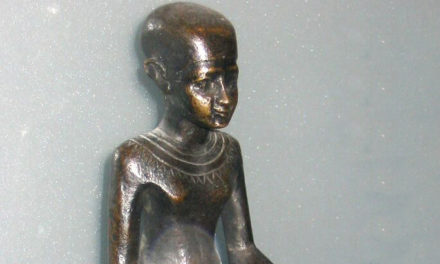I am an unashamed fan of history and spend much of my time away from Medicine reading about history and listening to podcasts such as the excellent ‘Hardcore History’ by Dan Carlin. This particular article was inspired by Daniele Bolleli’s incredible work on his ‘History on Fire’ podcast.
On September 19th, 1991 the well-preserved mummy, of a man who lived around 5,300 years ago was discovered by two German hikers in the Ötzal Alps on the Austrian-Italian border. This mummified body has proved to be one of the most important archaeological finds in recent history and has since been named Ötzi the Iceman. Whilst listening to Daniele’s podcast I was immediately struck by the medical relevance of this discovery.
Ötzi is estimated to be a man that died at around 45 years of age, was approximately 110 lb (50 kg) in weight and 5 ft 5 in (1.65 m) tall. At 45 years old he must have been one of the oldest members of his community. The research team that examined Ötzi discovered several fascinating anatomical and pathological anomalies.
A Trip to the Dentist
Ötzi had several interesting dental anomalies. He was noted to have a remarkable diastema between his two upper incisors. A diastema is a space or gap between two teeth that happens due to an unequal relationship between the size of the jaw and the teeth. The actor Terry-Thomas was famously known for his impressive diastema, as is the singer-songwriter Madonna.

Terry-Thomas was known for his impressive diastema.
He also lacked wisdom teeth, which is unusual. Agenesis of wisdom teeth is most commonly seen in Tasmanian Aborigines and is related to the presence of the PAX9 gene. Interestingly the PAX9 gene is also involved in the development of stratified squamous epithelium and an amplified version of this gene is also thought to contribute to the development of lung cancer.
His teeth were severely worn down, and this is thought to have been caused by eating stone-ground grains that contained grit. The left side of his upper jaw also demonstrated signs of significant wear and tear. This is possibly due to the fact that he used his teeth as tools for working with wood, bones and leather. He also had substantial internal deterioration of his teeth and numerous cavities. All in all, it would appear that Ötzi would have benefitted from a trip to the Dentist.
Beau’s Lines
Three intact fingernails were found at the scene and examination of one of these nails showed three Beau’s lines. Beau’s lines are deep grooved lines that run horizontally across a finger- or toenail. It is thought that these are caused by a temporary arrest of cell division within the proximal nail matrix. This can be caused by a number of different medical problems including severe systemic illness, trauma and infections. In the modern era, they are also known to be caused by chemotherapeutic drugs used in the treatment of cancer.

Beau’s lines are indicative of recent illness
The three Beau’s lines seen on Ötzi’s nail show that he had three separate periods of marked illness or trauma 8, 13 and 16 weeks prior to his death. The most recent line was the most pronounced. The exact cause of these may never be known but some of the other pathological findings may hold some clues.
A Neolithic First Aid Kit
Ötzi was discovered to have whipworm (Trichuris trichiura) in his bowel, a type of helminth. Whipworm eggs are usually ingested with contaminated food or water and then later hatch in the small intestine before maturing and migrating to the large intestine. Each worm can live for up to 5 years in the human bowel and female worms can lay up to 20,000 eggs per day.

Trichuris trichiura was found in Ötzi’s bowel
There are currently an estimated 500 million cases of whipworm worldwide and it is considered to be one of the ‘neglected tropical diseases’ that are commonplace in developing regions of Africa, Asia and the Americas.
Whipworm infections are often completely asymptomatic and Ötzi may not have even been aware of the infection. In more severe infections, where patients have 200 or more worms, symptoms such as watery diarrhoea, abdominal pain, and a need to defecate during the night can occur. Patients can also develop finger clubbing and anaemia.
Today whipworm can be effectively treated using an antihelminthic medicine called mebendazole. Amazingly Ötzi was found to be carrying the birch polypore fungus. This fungus contains polyporenic acid, which is effective at killing the whipworm and is also known to have styptic effects. Did Ötzi know he had whipworm and was undergoing a course of treatment? Did this birch polypore fungus form part of an ancient Neolithic ‘First Aid Kit’?
The First Recorded Case of Lyme Disease
DNA analysis of Ötzi in 2012 showed evidence of the presence of Borrelia burgdorferi, the bacteria responsible for Lyme disease. This would make him the oldest recorded case of this illness.
Lyme disease is transmitted to humans by the bite of infected deer ticks of the Ixodes genus. Ötzi may have been a hunter, or possibly a shepherd, and is likely to have spent large periods of time in the surrounding mountain meadowlands, this would have made exposure to ticks a common occurrence.
Lyme disease is currently the most common tick-borne disease in the Northern hemisphere and affects approximately 300,000 people a year in the United States and approximately 65,000 people a year in Europe. It has hit the news in the UK in recent years with a surge in cases that have been partly attributed to an increase in housing developments in rural areas.
Lyme disease is a multisystem disorder that can affect the skin, nervous system, heart and eyes. One of the most striking features of the infection is the presence of the erythema chronica migrans rash that occurs at the site of the tick bite a few days later. This occurs in around 75% of patients and the rash is an outwardly expanding area with a ‘bullseye’ appearance:

The classic ‘bullseye’ rash of Lyme disease
In the early stages of Lyme disease patients develop a constitutional illness with fever, headache and neck stiffness all being common. Arthralgia and myalgia are also frequently seen in the days and weeks after the infection. A small number of patients can go to develop pericarditis and meningitis as well as other neurological conditions such as cranial nerve defects and encephalitis.
Could a systemic manifestation of Lyme disease have been responsible for one of Ötzi’s Beau’s lines?
Further DNA Analysis
A lot of other interesting information was also provided by Ötzi’s DNA analysis, including the fact that he had a strong genetic predisposition to coronary heart disease. His genome revealed several single nucleotide polymorphisms that have been linked to modern day cardiovascular disease. In particular, he had a very specific chromosomal mutation located in chromosomal region 9p21 that is currently regarded as one of the strongest genetic predictors of coronary heart disease.
Computed tomography (CT) scans of Ötzi have revealed major calcification in several major blood vessels, including the carotid arteries, distal aorta, and the right iliac artery. In view of the fact that he was not overweight, wouldn’t have smoked tobacco and is unlikely to have eaten a high-fat diet, genetics appears to be the most likely explanation for this. It is not outside the realm of possibility that he had already suffered a significant coronary event and perhaps this was responsible for one of those three Beau’s lines.
The DNA analysis also showed that he was lactose intolerant, which supports the theory that lactose intolerance was common in the Neolithic era. We also know that he was blood group O and that he most likely had brown eyes.
Prehistoric Acupuncture Theory
X-rays taken of Ötzi’s bones showed signs of degeneration in several areas, including osteochondrosis and spondylosis of his lumbar spine and evidence of osteoarthritis in the knee and ankle joints. This may have been related to wear and tear from the heavy strain of a lifestyle involving frequent hiking over mountainous terrains. It is likely that this caused him to experience pain and stiffness in these areas on a daily basis.
Ötzi was also discovered to have had three gallstones, which could possibly have been related to a diet high in animal fats. This may have been completely asymptomatic, as many cases of gallstones are, but it is also possible that he suffered bouts of biliary colic, which presents with severe upper abdominal pain.
Recently researchers used ‘multispectral photographic imaging techniques’ on Ötzi that demonstrated the presence of numerous tattoos covering his body. He appears to have had over 60 tattoos divided into 19 groups across his body.
80% of these tattoos lie along acupuncture meridians used to treat back pain and abdominal problems. One intriguing theory is that these tattoos served as a very primitive form of acupuncture that may have been used as a therapeutic treatment for some of his numerous medical conditions such as his arthritis and gallstones. If this is the case then it would predate the previously earliest known use of acupuncture in China by at least 2000 years.
A Familiar Finding in the Stomach
A recent paper published in Science has revealed that Ötzi’s stomach was infected with Helicobacter pylori, a bacterium that is estimated to populate the gastrointestinal tracts of 50% of the current world’s population.
Although most patients with Helicobacter pylori are asymptomatic, it is known to cause chronic gastritis and other stomach pathology. Individuals infected with it have a 10-20% lifetime risk of developing peptic ulcers and a 1-2% lifetime risk of developing stomach cancer.

Helicobacter pylori was found in Ötzi’s stomach
Interestingly the strain of Helicobacter pylori found in Ötzi’s stomach is different to the hybrid strain that is found in modern Europeans and matches a strain that is found in India. Daniel Falush, a population geneticist from the UK has suggested that this has solved an important question about when the hybrid strain carried by modern Europeans emerged.
A Traumatic End
There is a great deal of conjecture about the exact circumstances of Ötzi’s death. What is known is that he suffered a violent and traumatic end. He had a deep, unhealed wound to his hand that occurred a few days earlier, and close examination of the body demonstrated numerous bruises and smaller cuts on his hands, wrists and chest. There was also evidence of a skull fracture that may have occurred in an attack just prior to his death. All this supports the theory that he involved in a struggle prior to his death and may have been fleeing from his assailant(s).
Whilst we will likely never know the motivation for his attack and eventual murder we do know the exact way in which he was killed. Examination of the left side of his back discovered a small skin wound that opened into a narrow channel. Inside a small arrowhead was found that had penetrated the left scapula and ended up a few centimetres from his left lung. Despite not striking any vital organs the arrowhead severed the left subclavian artery. Massive haemorrhage would have ensued from such a wound and Ötzi would have bled to death in a matter of minutes. Not even modern ‘ATLS’ style trauma management would have saved Ötzi under these circumstances.
Lessons from the Past
From a doctor’s perspective, I personally found the story of Ötzi the Iceman fascinating. This ‘cold case’ is surely one of the most interesting from ancient history. A fascinating murder-mystery case that Sherlock Holmes would have enjoyed, mixed with a series of puzzling medical phenomena that would have kept the misanthropic medical genius Dr Gregory House busy.
Ötzi may hold the key to the secrets of the origins of acupuncture and ancient management of infectious diseases whilst also providing us with interesting information in modern medical genetics. I hope you enjoyed his story as much as I did.







I meant to rate all of these essays with five stars, but mistakenly hit the wrong button.